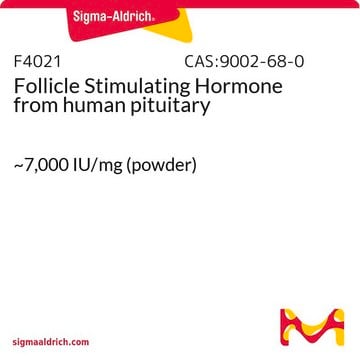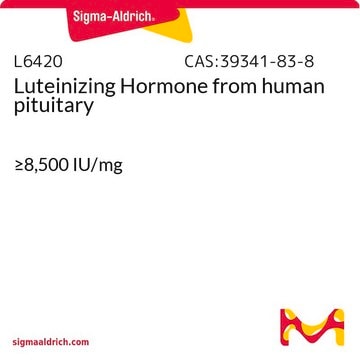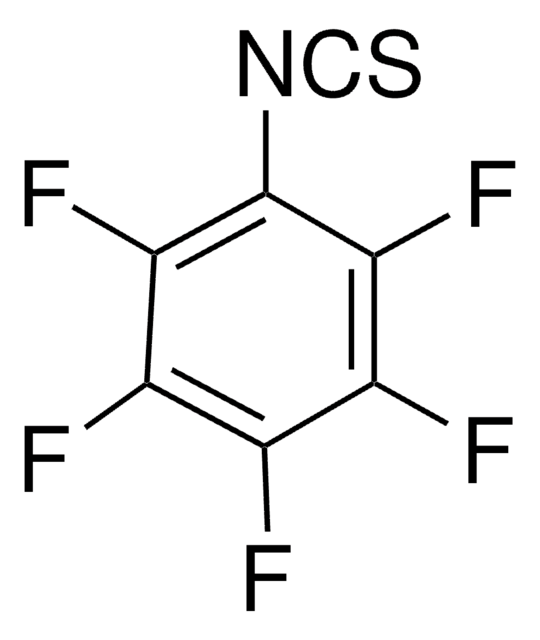869001-M
Follicle Stimulating Hormone, Human Pituitary, Iodination Grade
Follicle Stimulating Hormone, Human Pituitary, Iodination Grade, CAS 9002-68-0, is a native pituitary protein that regulates Sertoli cells by acting on G-protein-linked cell surface FSH receptors.
Synonyme(s) :
Follicle Stimulating Hormone, Human Pituitary, Iodination Grade, Follitropin, hFSH
About This Item
Produits recommandés
Source biologique
human pituitary glands
Niveau de qualité
Stérilité
non-sterile
Gamme de produits
Calbiochem®
Pureté
≥90%
Forme
lyophilized solid
Activité spécifique
≥2000 IU/mg
Fabricant/nom de marque
Calbiochem®
Conditions de stockage
OK to freeze
Impuretés
≤0.1% hCG
≤0.5% hLH, hTSH
pl
4.1
Solubilité
PBS: soluble
Température de stockage
−20°C
Catégories apparentées
Description générale
Research area: Cell Signaling
Actions biochimiques/physiologiques
Avertissement
Notes préparatoires
Reconstitution
Autres remarques
Informations légales
Anticorps
Code de la classe de stockage
11 - Combustible Solids
Classe de danger pour l'eau (WGK)
WGK 3
Point d'éclair (°F)
Not applicable
Point d'éclair (°C)
Not applicable
Certificats d'analyse (COA)
Recherchez un Certificats d'analyse (COA) en saisissant le numéro de lot du produit. Les numéros de lot figurent sur l'étiquette du produit après les mots "Lot" ou "Batch".
Déjà en possession de ce produit ?
Retrouvez la documentation relative aux produits que vous avez récemment achetés dans la Bibliothèque de documents.
Les clients ont également consulté
Notre équipe de scientifiques dispose d'une expérience dans tous les secteurs de la recherche, notamment en sciences de la vie, science des matériaux, synthèse chimique, chromatographie, analyse et dans de nombreux autres domaines..
Contacter notre Service technique










